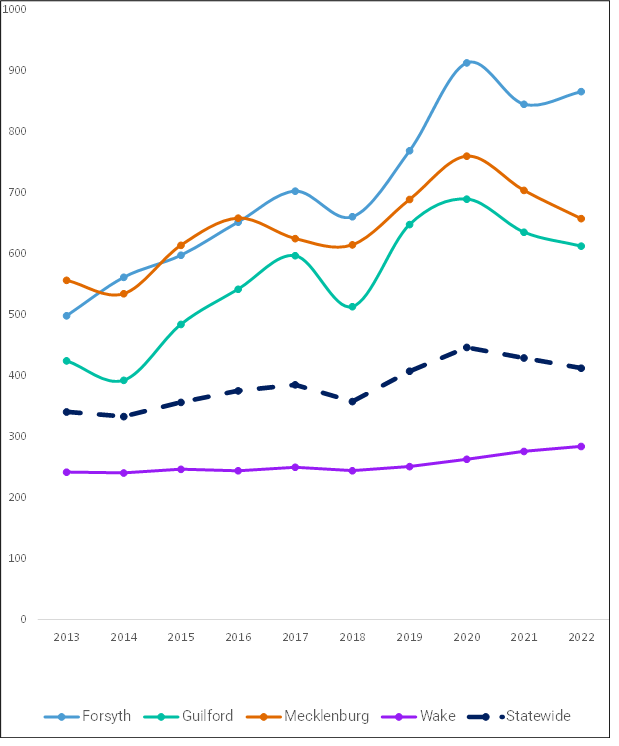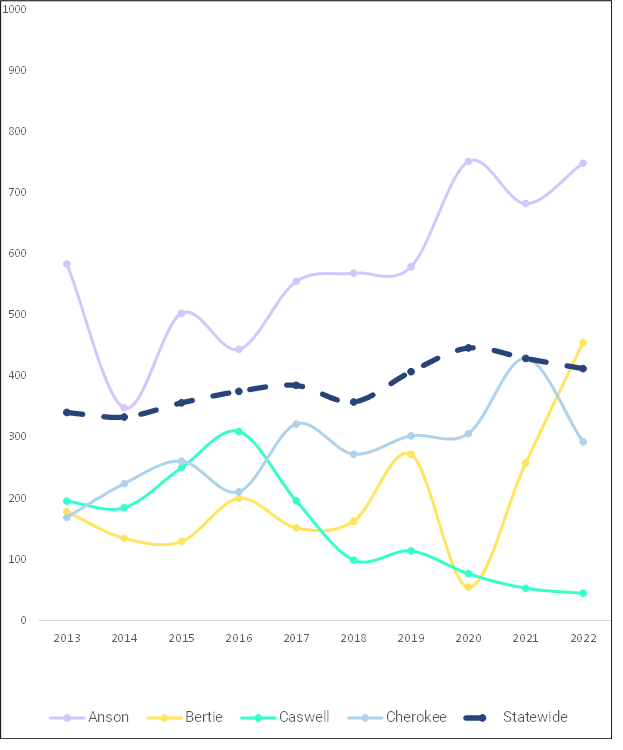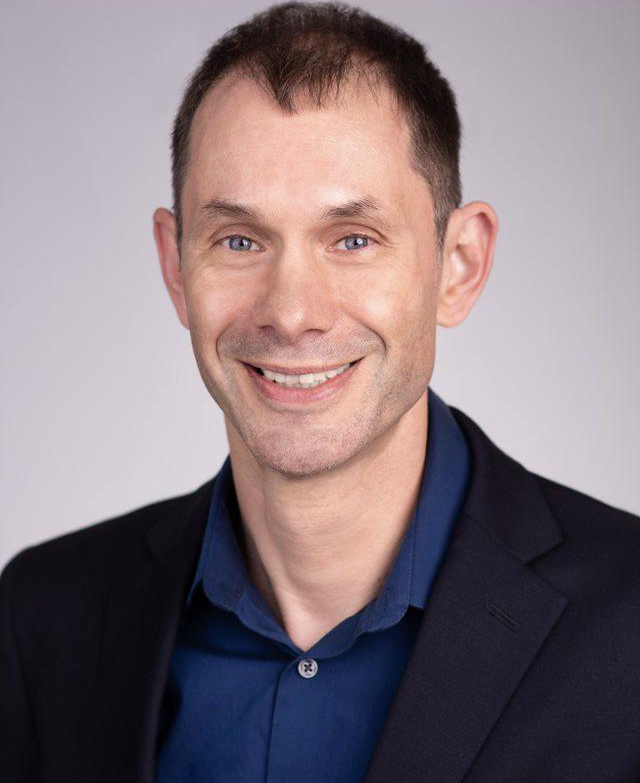
The national crime rate continues to attract a lot of media attention, but I haven’t seen much on North Carolina-specific crime data. In late 2022, I wrote about the violent crime rate in our state. In that post, I noted that violent crime rates fell between 2020 and 2021 and that rates for both years were far lower than the peaks of the 1990s.
In this post, I provide more recent data and discuss county-level variations in violent crime rates. I also explore the common perception that urban counties have higher rates of violent crime than rural counties.
The Violent Crime Rate in North Carolina Fell in 2022
As in my previous post, this one discusses data for index violent crime. The Federal Bureau of Investigation has used index offenses to standardize its data collection from the states for many years. Index violent crime includes four offenses: murder, forcible rape, robbery, and aggravated assault. The data come from police reports and then are published by the State Bureau of Investigation.
In 2022 the state’s index violent crime rate fell from the previous year, as was also the case in 2021. Figure 1 shows the rate of index violent crime per 100,000 people in North Carolina over 40 years.
Figure 1. According to police data, index violent crime in North Carolina continued to fall from its recent peak in 2020 and remains well below highs in the 1990s

County Variation in the Violent Crime Rate
So, how much do the levels of and trends in violent crime rates vary from county to county? The bottom-line is that there is tremendous variation across both urban and rural counties.
To explore this, I looked at those same police data over ten years for a set of urban and rural counties. Because of the national attention on urban crime, I looked at index violent crime trends in the four North Carolina counties with the largest populations: Forsyth, Guilford, Mecklenburg, and Wake. And because one in three North Carolinians live in a rural area, I also looked at trends in four rural counties that were both geographically diverse and have complete data for the past ten years: Anson, Bertie, Caswell, and Cherokee (see Figure 2).
Figure 2. Urban and Rural Counties Included in the Analysis.

Some—But Not All—Urban Counties Have Violent Crime Rates Higher Than The State Average
Figure 3 shows that across all ten years, the index violent crime rate in three of the four urban counties—Forsyth, Guilford, and Mecklenburg—was above the state average. However, the index violent crime rate in Wake County was lower than the state average.
Additionally, there is considerable variation in violent crime rates for these counties. For example, in 2022, the index violent crime rate for Forsyth was three times Wake County’s rate.
One thing was similar across all four counties: the ten-year trend for all four counties was upward, with Forsyth and Guilford’s increase being greater than the other two counties.
Figure 3. Three of the four highest-population counties had rates of index violent crime above the statewide average.

The Violent Crime Rate Varies Greatly Among Rural Counties
The rate of violent crime varies even more across rural counties than urban counties. Figure 4 shows that in 2022, the index violent crime rate in Anson County was about 750 per 100,000 people, which is nearly 17 times as great as the rate for Caswell, at about 45 per 100,000 people.
Both the level of and trend in the index violent crime rate in Anson County look a lot like the three urban counties of Forsyth, Guilford, and Mecklenburg. Also, the rate in Anson is above the statewide average, whereas the other three rural counties are generally below the average (Bertie in 2022 is slightly higher than the statewide average).
The ten-year trend is broadly upward for three of the four rural counties: Anson, Burke, and Cherokee. However, Caswell County has a downward ten-year trend in the index violent crime rate.
It should be noted that some of the variation over time in any given county could be random variation. This is particularly true for rural counties where there are relatively few crimes.
Figure 4. The index violent crime rate varies greatly across the sample of four rural counties.

Discussions about solutions to violent crime will always benefit from looking at the data. This post points out that the while the index violent crime rate was down in 2022, the level of and trend in the rate varies significantly from one county to another. It also shows that some urban counties may have higher violent crime rates than some rural counties, but this isn’t always the case.

